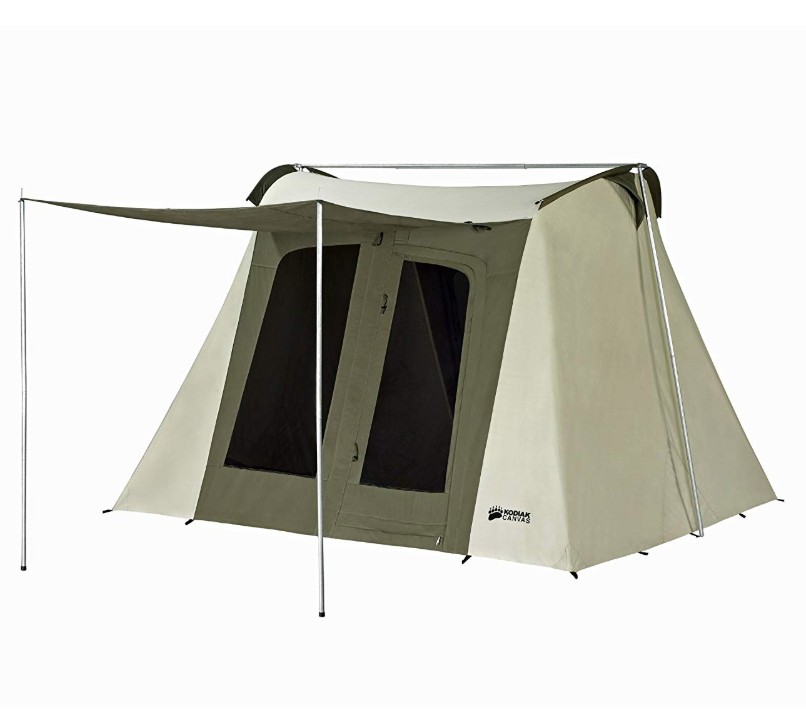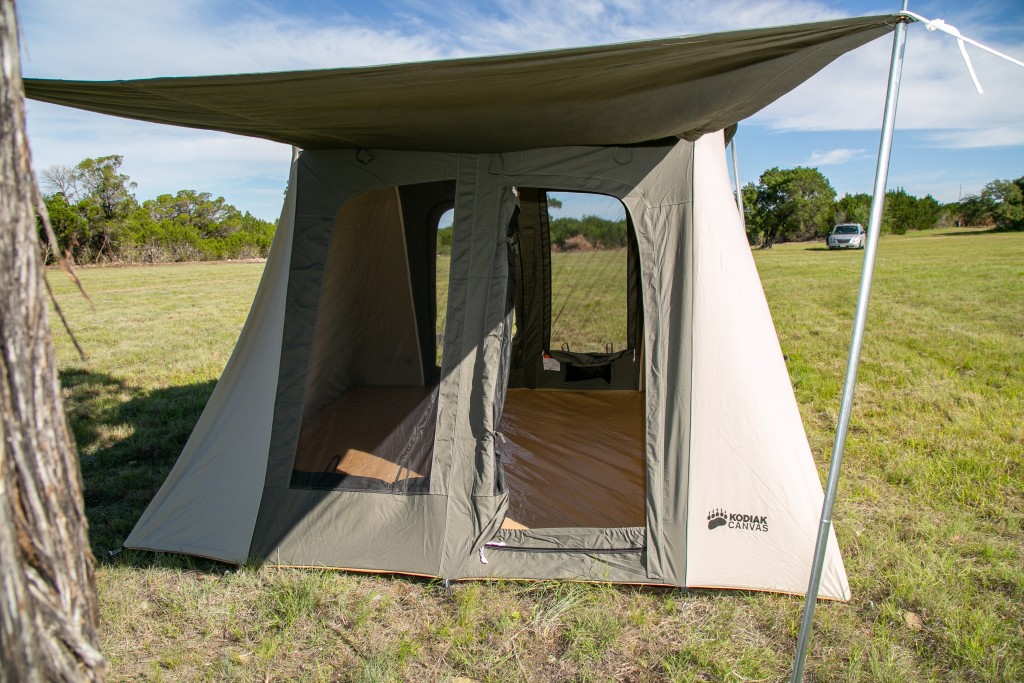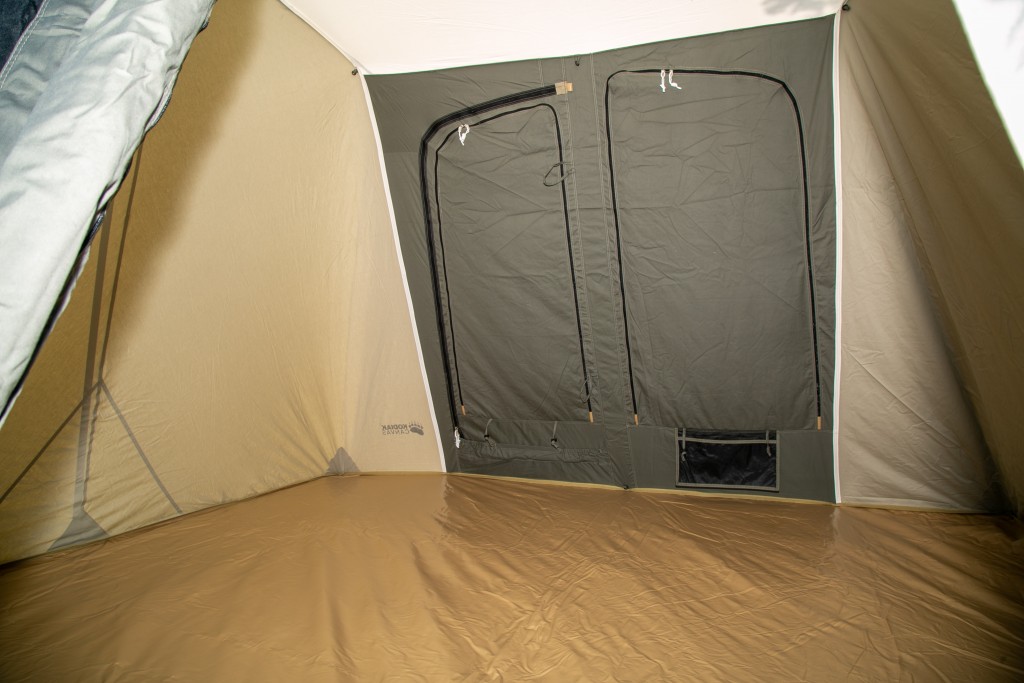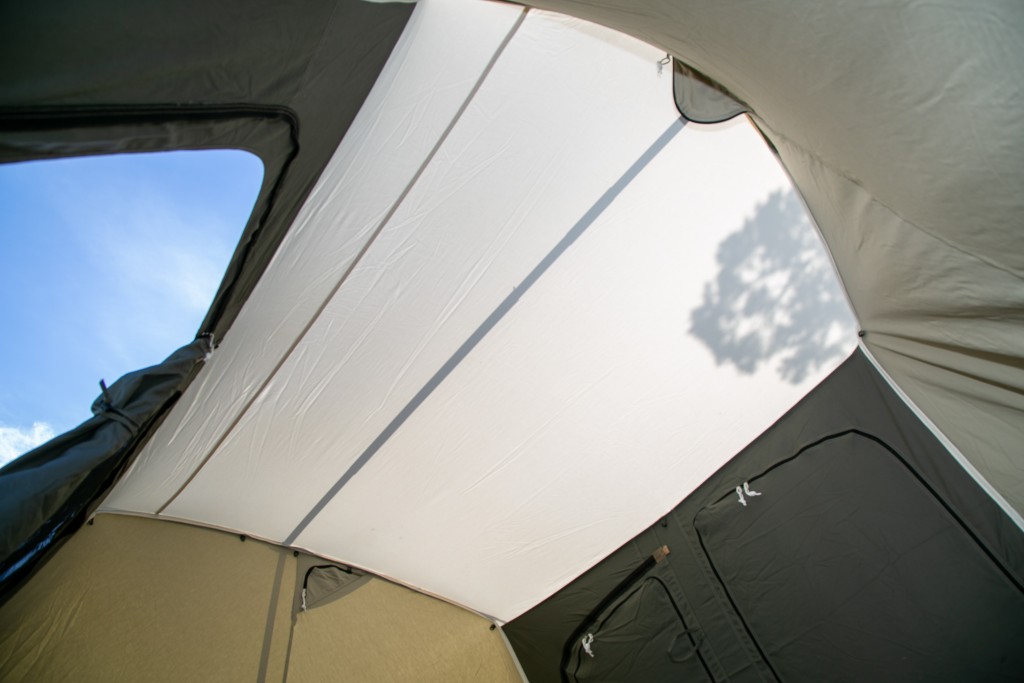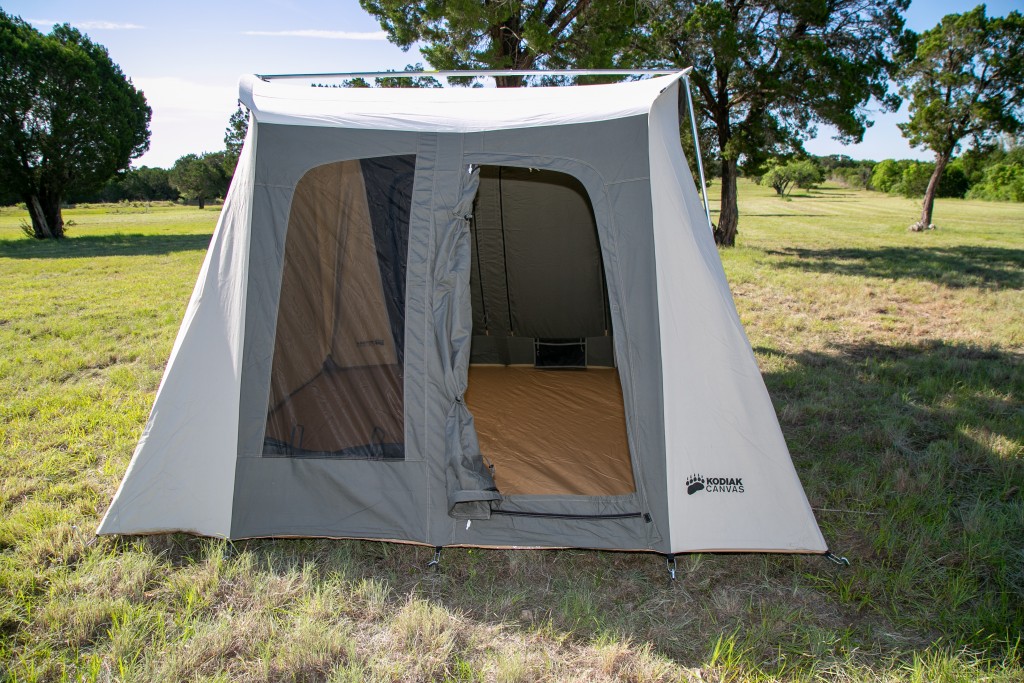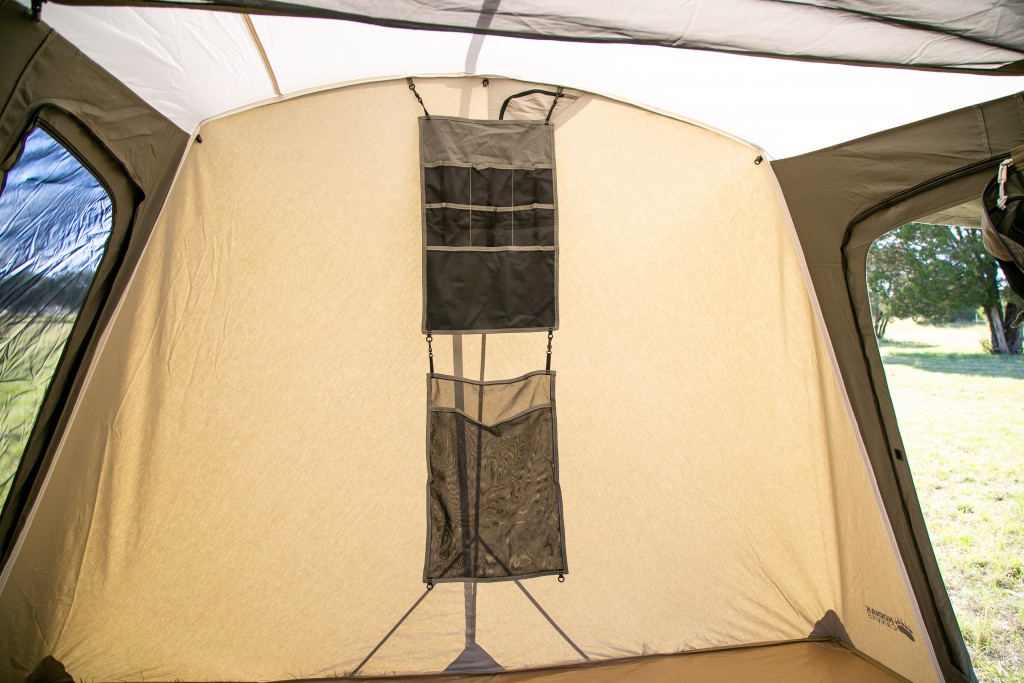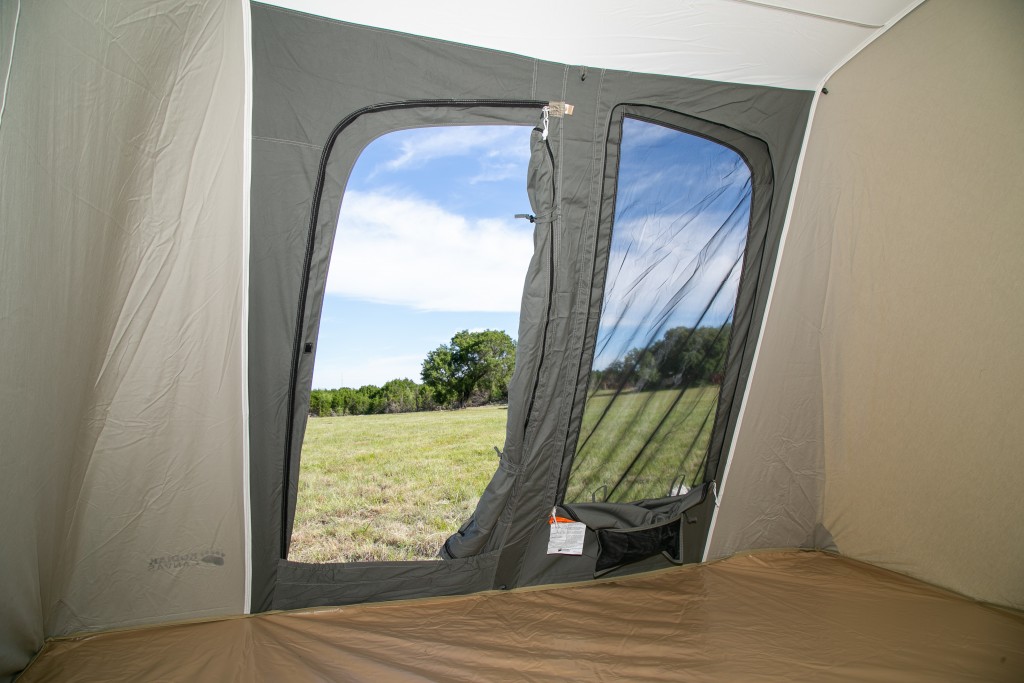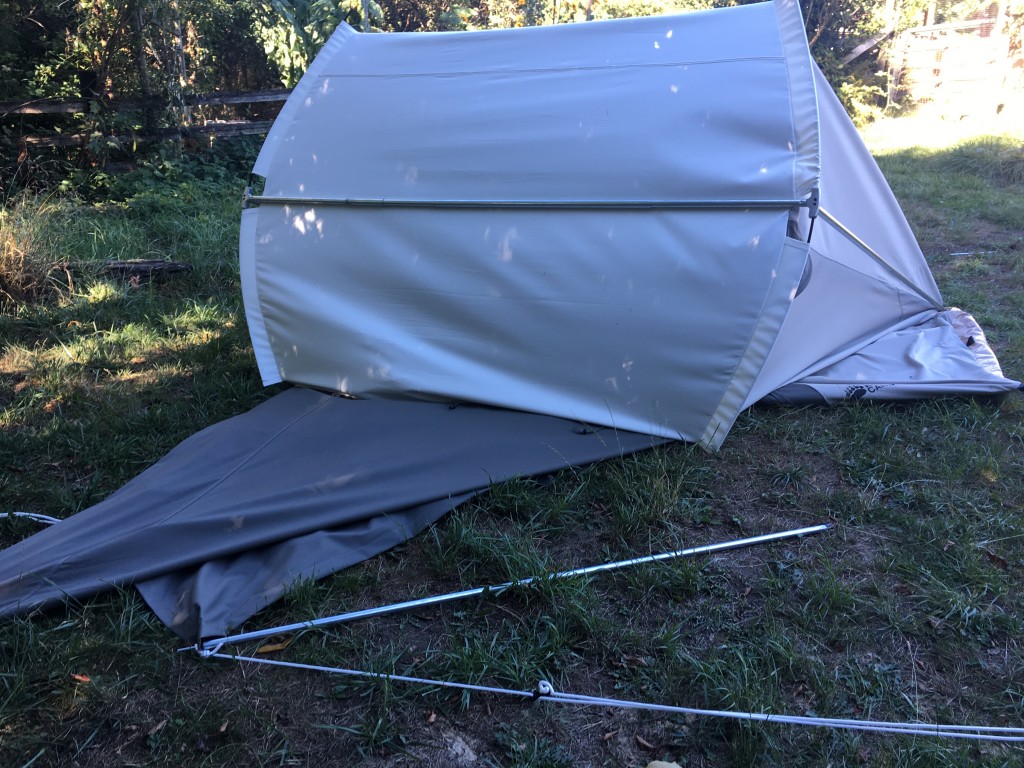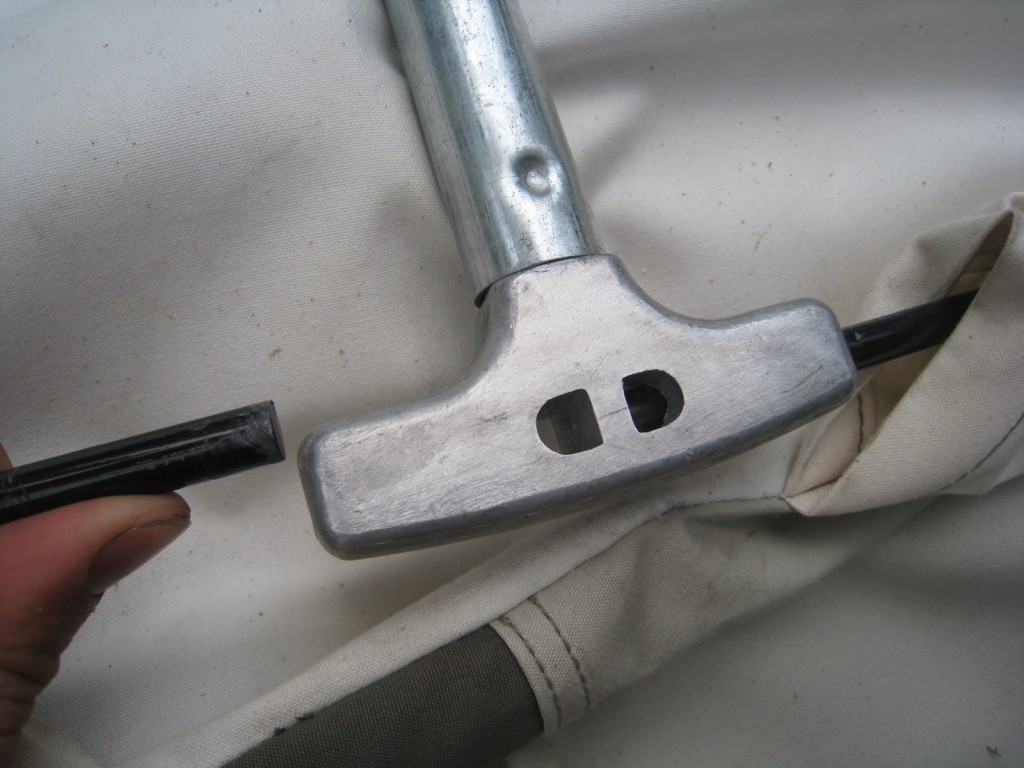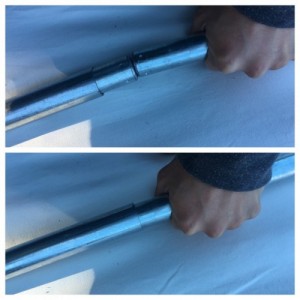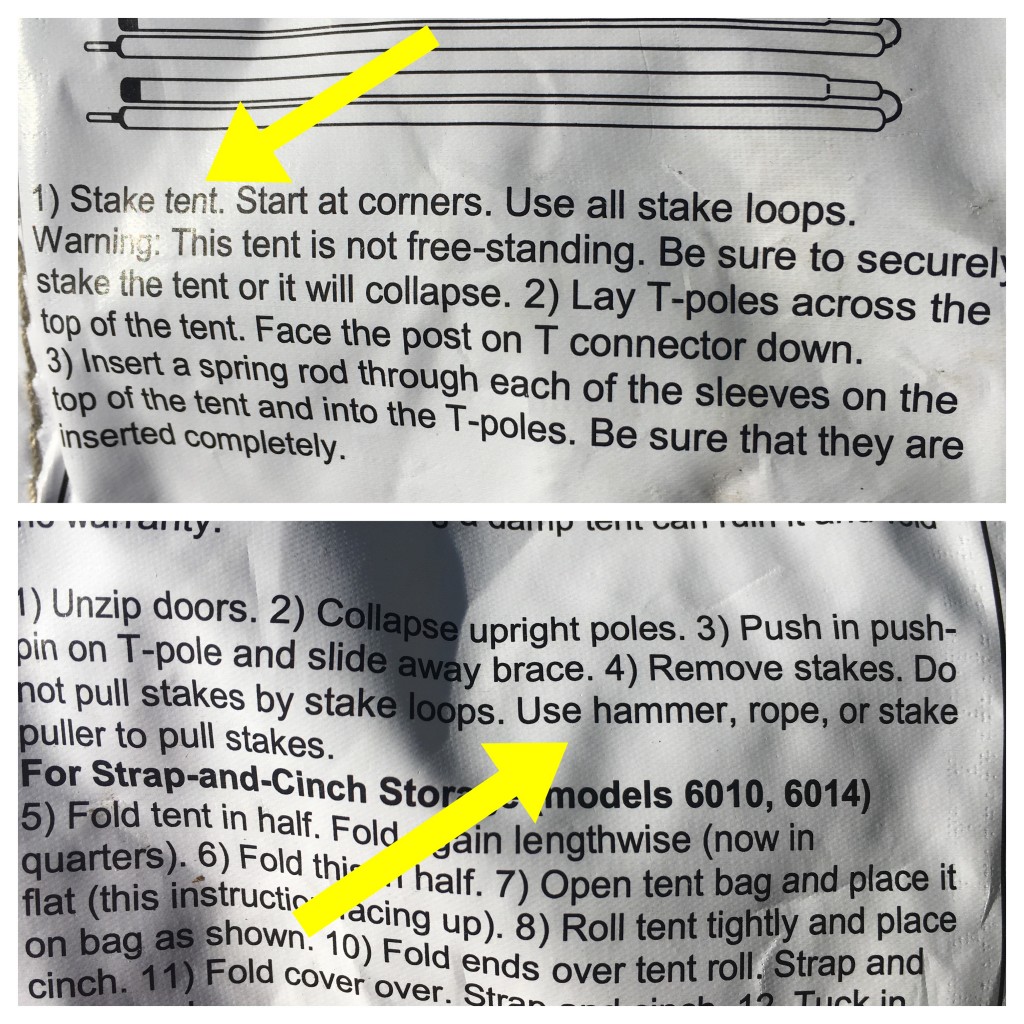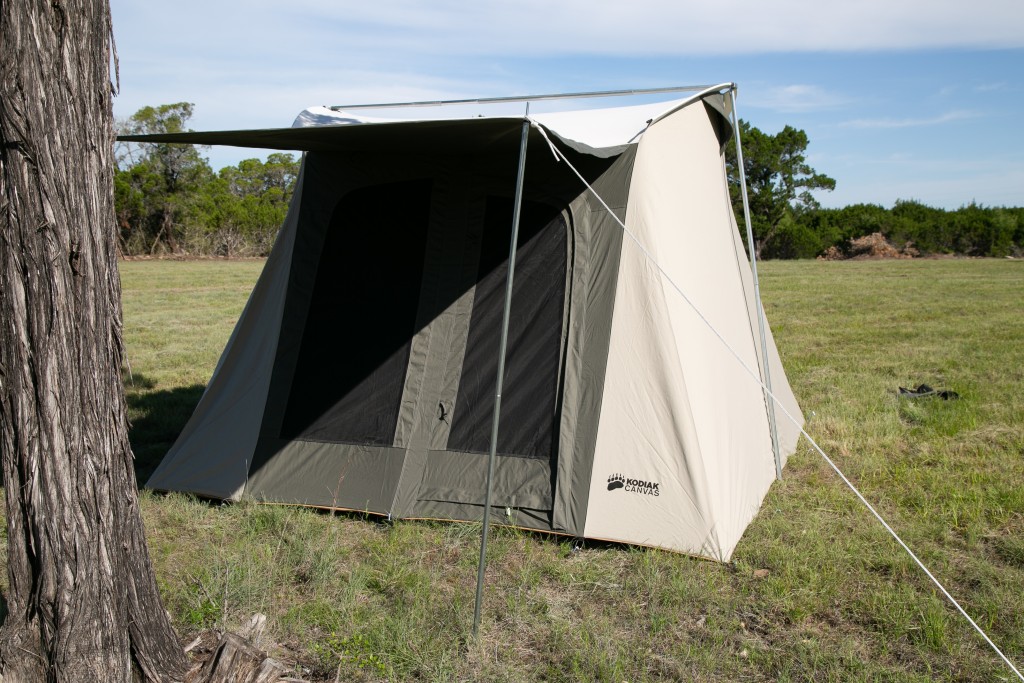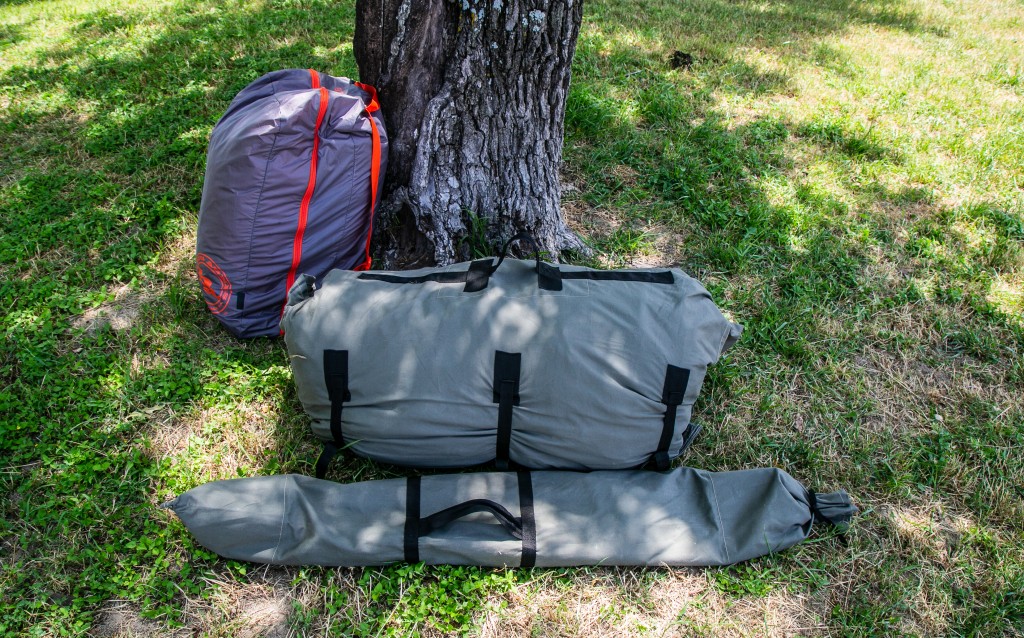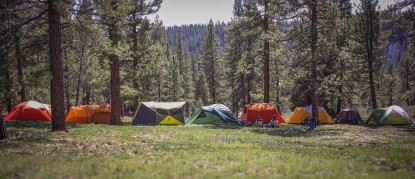Kodiak Canvas 6-Person Flex-Bow Review
Our Verdict
Our Analysis and Test Results
The Kodiak Canvas Flex-Bow 6 tent is a rugged and charming — and heavy — piece of gear that's not to be confused with the muscle-pumping Bowflex machine. For as much as the weight is a deterrent (and a fun point to conjure up analogies over), the comfort and style in which you'll be living for the duration of your excursion is equally as unique and enjoyable. A quick Google search turns up countless rave reviews of this tent and its construction. That said, this is a niche tent that has a lot of competition in terms of lower prices, lighter weights, and easier set-ups, but we must say it had a unique effect on us: it made us think a little bit more about just what it is we're doing when we go out for a camping trip.
Performance Comparison
Space and Comfort
When pitched in the right setting, this tent lets you live in rugged luxury. Run your hands along the supple yet thick canvas and take in how much different the experience is from other tents made completely of scratchy, noisy synthetic materials. The light comes in through the translucent ceiling differently — with a soft, ambient quality. The burly vinyl floor feels like an actual floor and doesn't make a sound as you traverse it. With a floor size of 10 ft x 10 ft, the Flex-Bow is at the top end of ground space in our test group. The near-vertical walls and tall ceiling make it feel extra spacious and give you and your crew plenty of room to stretch out and up.
Once this tent is solidly staked out and pitched properly, it provides a supremely livable space. The key is the staking. This is NOT a freestanding tent, and Kodiak warns you of this in their instructions. The Flex-Bow relies completely on your ability to stake it down at the multiple steel loop points it offers along the ground, and we highly recommend you utilize all the incredibly tough, long stakes to do so (yes, you, Mr.-I'll-Only-Need-The-Corner-Stakes-Cheater). Then and only then may you go and fully enjoy this tent with little worry.
While the canvas on the Flex-Bow has been treated with weather-proof sealants, the angles of the doors are a bit concave. This leans the doors slightly toward the sky, where they can be subjected to direct moisture and wind. This a a true single-walled tent so there is no fly or vestibule. But in place there's a huge pre-attached awning that you need to prop up with the two accompanying awning poles and then stake out well with guy-lines.
You won't want to open the uncovered back door during a rainstorm; however, the storm/element flaps inside the zippers help to keep the weather out so long as they stay zipped. Bottom line: it's good that the interior is so cozy because you'll probably want to stay put during inclement weather. The thick canvas and zipper flaps also keep dust and sand out. If the wind kicks up, you can comfortably escape by zipping yourself inside, but again, make sure your stakes are into some solid ground where they won't easily pull out when the wind invariably catches this tent. To this end, we set it up in a rather open field with some gusty wind and while the canvas rippled a little (jarring the reviewer's camera off the ceiling gear loft - yikes) it didn't really fold in or deform the tent. Again, we chalk this up to absolute proper staking.
The Flex-Bow provides some nice amenities for keeping things organized and classy when you're hanging out indoors. A large mesh gear loft attaches across the ceiling to provide out-of-the-way storage space overhead, and there's also a detachable wall organizer chock full of useful smaller pockets. From books to games to toiletries, the wall organizer is a really nice addition and helps improve the enjoyment of the interior space.
Weather Resistance
This is the tent that you want for desert sandstorms and dry, dusty areas. The thick fabric and generous zipper flaps keep blowing dust, dirt, and sand completely outside. This thick canvas tent is highly impermeable to things you want to keep out but is breathable like a cotton T-shirt. Rain, however, is another issue. The awning provides some vestibule-esque protection as you duck inside the tent, but as the back door is angled slightly upward, if you open it during a rain event, water will fall directly inside the back door.
Because of the thickness of this tent, it's equally at home in cooler climes. The walls truly provide some measure of insulation akin to any double-walled tent (ones that come with a separate fly) yet actually breathe better as this is a more natural, breathable material than the tight-woven, polyester-type materials of most tent flies which can make things a bit steamy if not also properly vented.
We've mentioned that this tent must be “solidly staked out and pitched” and we'll repeat it here in the Weather Resistance metric in case you're skipping around because this is where it's again essential. If you have done a proper job driving the steel tent stakes through every anchor loop (with a mallet if needed), and perfectly tensioned the awning guy lines, then you're probably pretty well set. If those anchors aren't extremely strong, however, winds will find all the kite-like angles and blow this tent over. And since it is not a freestanding tent, each stake takes on added importance; the loss of one key stake or guy line and the whole thing can capsize in a storm.
Note that for all its ruggedness, the Flex-Bow is not actually designed for use in mountainous or extreme environments. This is a fun and homey tent that will last you and your next generation of campers for years to come, but it's more suited for classic “car camping” at traditional marked campsites or for, perhaps, hunting expeditions where you will set up and stay put for an extended period of time.
Ease of Set-Up
This is a tent to practice setting up a couple of times before heading out because at first (like us) you'll probably have to study the instructions like you have final exams in the morning while staring at the scant number of poles figuring out what they mean by flexing the two ceiling poles together to tension the flex-bow poles. Yikes, where's that guy in the leopard unitard? Ultimately, with a little practice, it becomes relatively easy. But there are a few caveats. One, (here we go again) be sure it is very well-staked out before trying to erect the tent. Two, watch your fingers and other body parts for pinching; the design requires that you work with tensioned poles and sliding metal bars. Three, be prepared for a workout, the tent material is heavy and demands some wrangling.
Like us, upon laying everything out, you'll probably think that Kodiak forgot to include a bunch of structural poles. Not so. In some mad, ingenious world, Kodiak Canvas created a system whereby you first build out a tensioned and flexed roof, and then raise it skyward using ONLY two poles. Yes, it feels like a circus act. What tent only has two poles to hold it up? No others that we can think of or have used! And like a broken record, this is where the stakes and proper staking thereof comes in because it's the tension they provide against the two vertical poles that literally keeps this thing aloft.
Overall, if you're an experienced tinkerer and/or appreciate the art and science of tension as it relates to mechanical engineering, you're gonna love the Kodiak. Bottom line, the setup requires that you think and slow down a little. If you're often rushed, stressed, or short on time when you camp, this is probably not the tent for you. But if feeling like you're truly engaged in the process of constructing your shelter is your thing, then we imagine you'll find some pride and enjoyment in the Flex-Bow.
Durability
This is a hand crafted tent with super durable materials that will last a very, very long time if taken care of. It is not, however, a tent to be thought of as an easy or fast-pitch style abode, but that might (?) be part of the appeal. As eluded to in the intro, the Kodiak Canvas tents are for folks who embrace camping as a true lifestyle: the ruggedness, the chance to feel what it was like to live like Thoreau on Walden Pond.
As for the spikes that come with the Kodiak, we weighed them alone, and the lot of them were heavier than some of the full tents in this review! That's durability. The only way you're going to bend these is by laying them across a railroad track for a 10,000-ton steam engine to run over. Trust us, your pocket knife may damage this thing, but it's certainly going to take more than an “accident” (a rogue fishing rod, let's say) to do any sort of damage or put a hole in this tent. You're gonna need a new fishing pole first. This is a tent that you buy for the long haul and for the sheer love of a (portable) cabin-like space. Take care of it, in all its 70 pounds of glory, and it will take care of you in return — for many years to come.
Packed Size
Whoa, this thing's a beast — almost 70 pounds of tent. The packed size (and weight!) can make a professional TV wrestler cringe. Fortunately, the separate pole and tent carrying cases balance each other relatively well, so you can carry one in each hand (if you are one of those wrestlers looking for a tent) or take one at a time, or hold your first “group” activity by enlisting everyone for an all-together-now! lift and carry. But we'll say it again: this is a camping tent, not a backpacking tent. Be sure to plan your packing because this isn't the item you just chuck on top or cram in just over little Johnny's head at the last second because the rest of your garage is already stuffed in back. And make sure you really, really like your campsite first, cuz moving campsites is not gonna be fun.
Value
The Canvas Flex-Bow is on the pricier end of tents in this review, but it will last for a very long, long time. The canvas, vinyl, and sturdy steel poles are likely to shelter your friends or family for a few generations. If this is the type of tent you're looking for, then this one is as good a long-term purchase as anything. However, it is not the most versatile tent for the price and won't be best in super rainy or windy weather.
Conclusion
The Kodiak Canvas Flex-Bow tent is a classy, well-built tent that looks and feels like a throwback to another generation. If you're skipping to the conclusion here, the entire theme of this review is that this beauty is heavy and difficult to wrangle when setting up in anything but nice weather. The non-freestanding design requires users to stake it out very diligently, possibly even requiring the use of a rubber mallet to ensure it won't blow or fall over. Otherwise, this holds up under the scrutiny of both hot, desert-like conditions and much cooler mountain/valley/riverside plots as well because the thick canvas acts like the insulation in your house (sorta) — it helps regulate temps and atmosphere better than the super-thin-walled tents that make up most of the others in this review. Thus, if you are the poster child of classic car camping, this might be your ideal tent. If not, consider the pros and cons carefully before forking out the cash for this, albeit cozy, beast.


